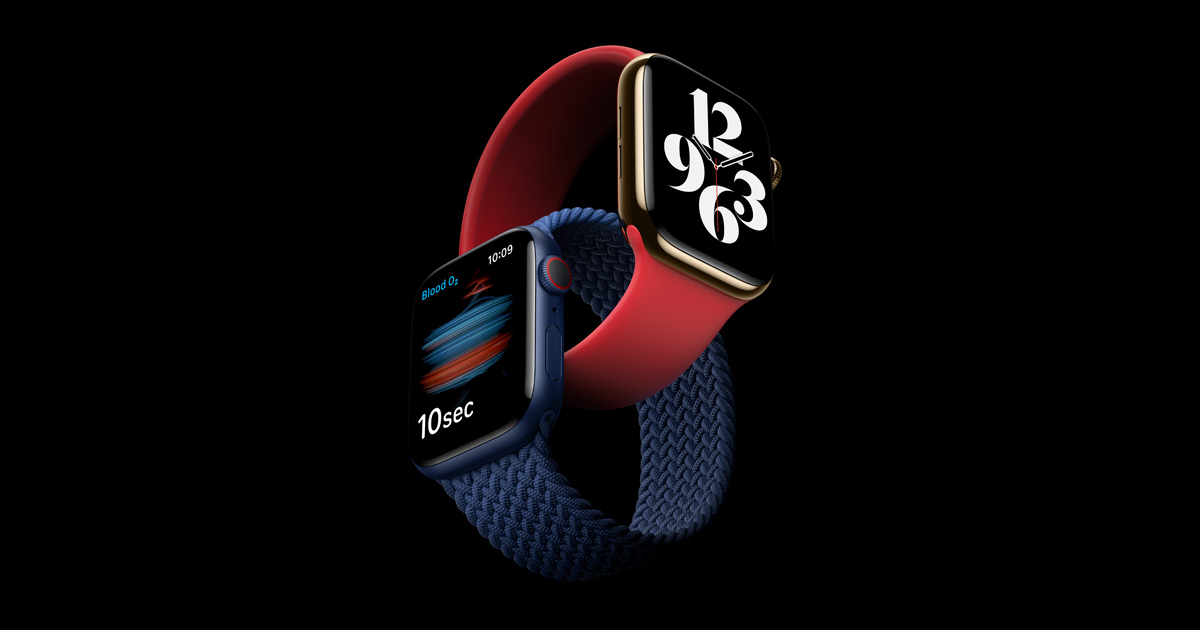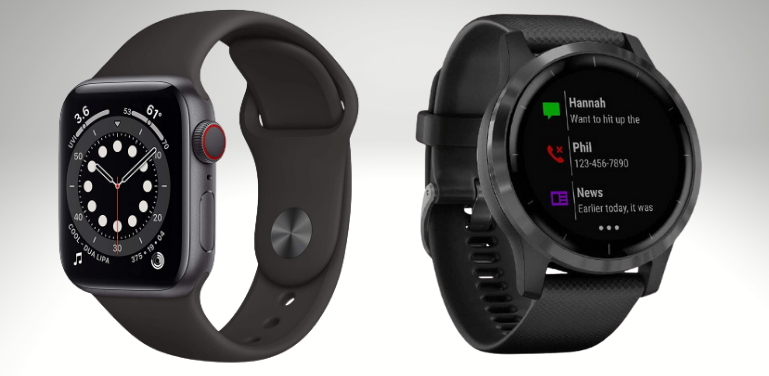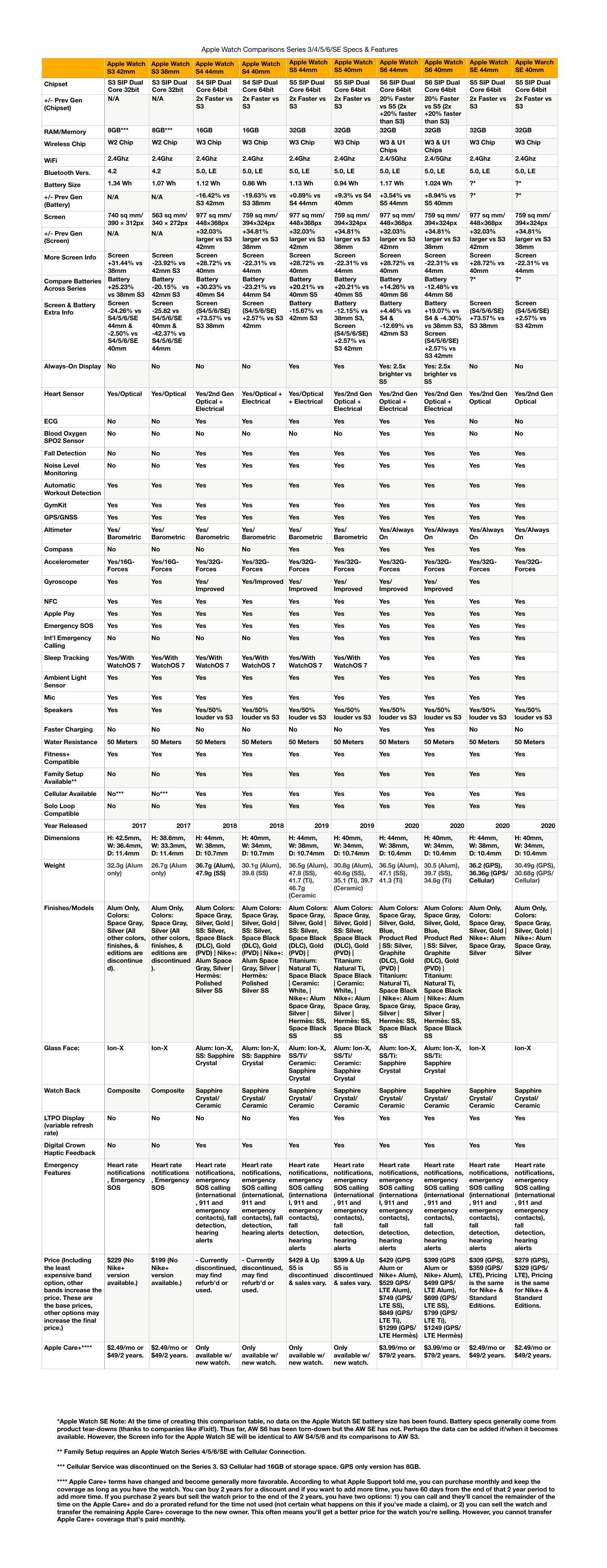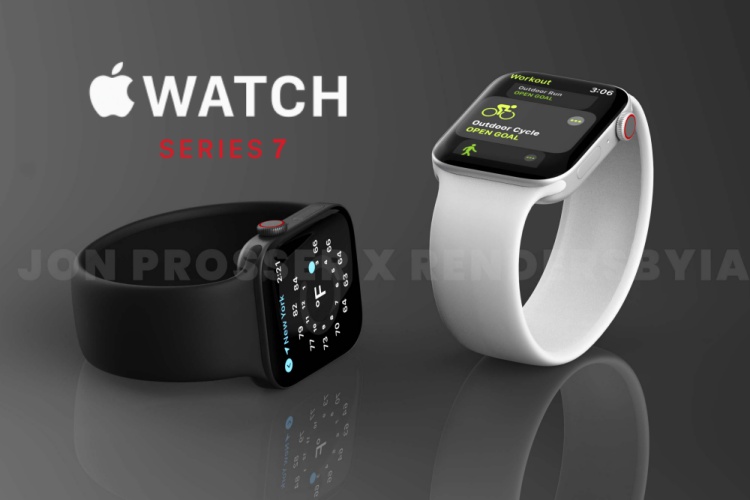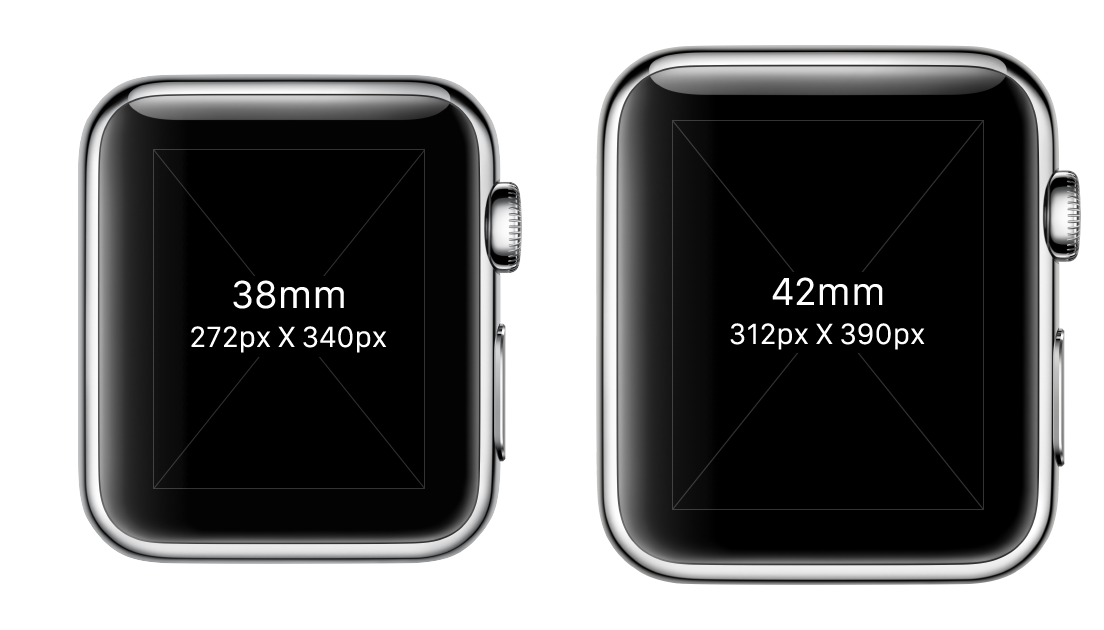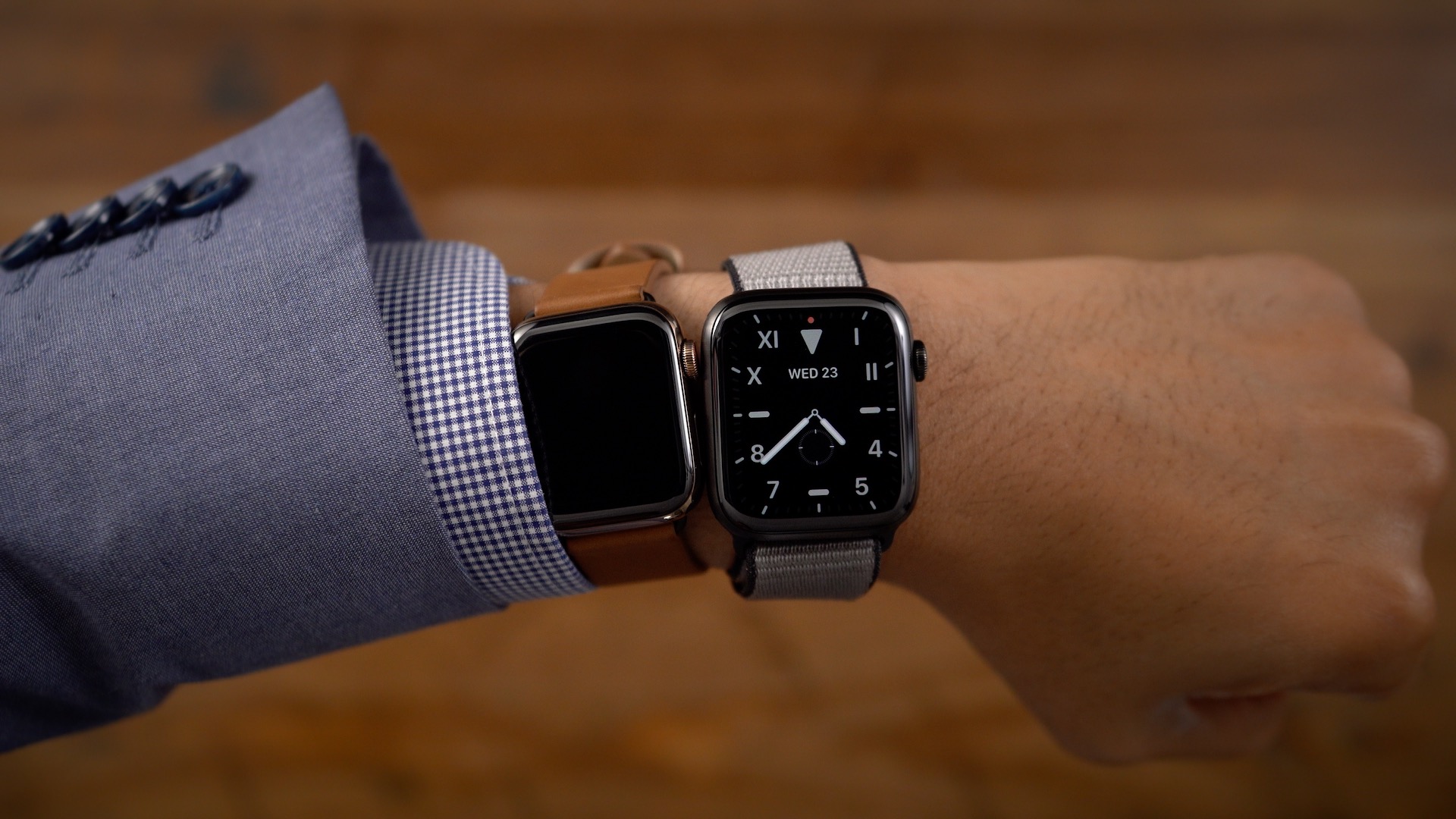Additional features include a new S6 processor that is up to 20% faster than the S4 and S5, a 2.5× brighter always-on display, and an always-on altimeter. The Series 6 watch was updated with faster charging hardware such that it completes charging in ~1.5 hours. Force Touch hardware was removed, consistent with the removal of all Force Touch functionality from watchOS 7. Both incorporate several life-saving features, including fall detection, electrical heart sensor, international emergency dialing, and heart rate monitor. However, Apple Watch Series SE does not support Blood Oxygen and ECG apps, which are new features present on the Apple watch series 6. The cellular and GPS version comes with a price tag starting from $499, while the GPS only version sells from $399.
The S7 SiP with 64-bit dual-core processor is up to 20% faster than the S5 in Apple Watch SE.11 The always-on altimeter detects your elevation in real time. The Series 7 is also equipped with new hardware that enables ultra-rapid, short-range wireless data transfer at 60.5 GHz, though Apple has not fully explained this new functionality. TechRadar gave it a score of 4.5/5, calling it one of the top smartwatches, while criticizing the short battery life. Digital Trends gave it a score of 5/5, calling it Apple's best product and praising the design, build quality, and software, among others, while criticizing the battery life.
CNET gave it a score of 8.2/10, calling it the "best overall smartwatch around", while criticizing the battery life and lack of watch face options. T3 gave it a score of 5/5, calling it a "truly next-gen smartwatch" due to its thinner body and bigger screen compared to the Series 3, and health features. Now, although Apple will not officially sell the Apple Watch 6, users can still buy the previous-gen Apple Watch from third-party resellers until stocks last.
So, which one should you get if you are in the market for an Apple Watch? Well, if you want the latest and greatest from Apple, we recommend you go for the latest Apple Watch 7. The larger display, dust resistance, and faster charging are reasons enough to convince prospective buyers.
Otherwise, if you don't care much about these minor upgrades and just want the Apple Watch experience, go with Apple Watch 6, which will now sell at reduced prices. The difference here is the recharge speed, which is improved quite a lot on the new smartwatch. Apple says the new Watch Series 7 charges up to 33% faster than its predecessor thanks to a novel charging architecture, as well as a fast charging USB Type-C cable. According to Apple, the Watch Series 7 will take just 45 minutes to charge from 0% all the way to 80%, with an 8-minute rendezvous with the charger allegedly allowing for up to 8 hours of sleep tracking.
That's a great improvement in comparison with the Watch Series 6, which has the same battery life but charges slower. Still, this might be a non-issue if you charge your smartwatch overnight anyway. It lacks fairly basic features like interval sessions and heart rate alerts. The 6 and 7 have the same array of sensors, including a blood oxygen sensor, an electrical heart sensor, a third-generation optical heart sensor, GPS, and a barometric altimeter. It's worth noting that all of these features - except the always-on altimeter - can be found on the Series 4 and 5 too. Internally there is a new S4 64-bit dual-core processor, capable of up to double the S3's performance, upgraded 16 GB storage, and a new electrical heart sensor.
The microphone was moved to the opposite side between the side button and the digital crown to improve call quality. Other changes include the digital crown incorporating haptic feedback with the Apple Haptic Engine and includes the new Apple-designed W3 wireless chip. So, the difference between the two generations of Apple's smartwatches boils down to the importance placed on the larger display, the reduced charging time, water-and-dust resistance, and color options. If one has already made up one's mind, there is no persuading otherwise. Overall, the Apple Watch Series 7 is a minor upgrade over the Apple Watch Series 6, offering larger displays and casing sizes, new color options, improved durability, the S7 chip, and faster charging.
Apple Watch 6 Vs 7 Size Comparison These features are mostly iterative improvements rather than major reasons to upgrade, and the Series 7 does not add any new functionality. Apple hasn't provided any significant additions to the health features on the Apple Watch Series 7. The Apple Watch Series 7 offers blood oxygen saturation tracking using a built-in Blood Oxygen sensor.
It is also capable of tracking heart rate using an electrical heart rate sensor that was first introduced on the Apple Watch Series 4. The smartwatch can also detect atrial fibrillation and can provide an electrocardiogram report, same as the Apple Watch Series 6. Initial reviews for the device have been generally positive with some caveats. Reviewers praised the watch's potential ability to integrate into everyday life and the overall design of the product, but noted issues of speed and price.
Many reviewers described the watch as functional and convenient, while also noting failure to offer as much potential functionality as preceding smartphones. Some reviewers also compared it to competing products, such as Android Wear devices, and claimed "The Smartwatch Finally Makes Sense". He concluded that there is no "killer application" so far besides telling the time, which is the basic function of a wristwatch anyhow. While you shouldn't expect a bump in battery life for the Series 7, it does juice up faster than earlier models thanks to a new charging architecture and a Magnetic Fast Charger USB-C Cable. Apple says it charges 33% faster than the Series 6—just 45 minutes of charging will take the watch from dead to 80% battery life.
And eight minutes on the charger offers eight hours of juice for overnight sleep tracking. This is Apple's most powerful smartwatch yet and it features upgrades like a bigger screen, dust resistance, faster charging and more. But taking a deeper look at the differences between the Watch Series 7 andSeries 6, it doesn't seem like a major upgrade. We tell you what has changed and what remains the same in this detailed comparison. The Apple Watch Series 7 offers a number of upgrades and improvements on 2020's Series 6, offering a larger display with bigger casing sizes, faster charging, and the S7 chip, for a price starting at $399.
In addition, just like Series 6, the Apple Watch Series 7 will include an electrical heart sensor with the ECG app and the ability to analyze blood oxygen levels. With that, users will also receive Apple's other health features, like sleep tracking, exercise tracking, and Apple Fitness Plus compatibility. Other than this, the Apple Watch 7 display is also 70% brighter vs the Apple Watch 6 display in terms of the always-on display. That means you will be able to check the time more easily when idle in comparison to the previous-gen model. Plus, Apple has redesigned some of the UI elements on the Series 7 to utilize the larger screen area.
For instance, you now have larger on-screen buttons, can read long texts in one go, new in-depth activity complications, and quirky watch faces to match the larger curved display on the Series 7. Moreover, unlike the previous-gen model, Series 7 features a full keyboard with swipe support to input texts. Battery life on both is a full day's usage, so overnight charges are required, but you won't be buying the series 6 for extra battery life. Although the SE doesn't have ECG or blood oxygen monitoring, it has the same heart rate capabilities and neat features like Breathe, a one-minute mindfulness app, as the series 6.
Speaking of the battery, the Series 7 promises the same runtime as its predecessor, which is to say, about 18 hours. I generally found myself getting about half a day more from the new watch than the SE, despite the lack of an Always On display on the SE. The Series 7 usually stuck around for a day and a half, almost two, with the screen set to Always On, and tracking between three and five workouts. I also used the device to send plenty of messages and map my walks while I ran errands with the GPS on. That endurance is impressive given the larger screen, but it's worth noting that I haven't used the watch for sleep tracking yet.
All the Watch models being compared here have built-in GPS, optical heart rate sensor, speaker, microphone, water resistance up to 50 metres, emergency SOS, gyroscope and an ambient light sensor. Secondly, in the case of the Series 7 , the Digital Crown has an electrical heart rate sensor built into it, which is in addition to the optical heart rate sensor on the underside of the watch. The Watch Series 7 also has a blood oxygen sensor, like the Series 6, and it has reduced bezels surrounding the display, as well as an IPX6 dust resistance. The Apple Watch Series 7 is a minimal upgrade on the inside, but the new larger display with thinner bezels looks gorgeous. While it has the same battery life as last year's model, the Series 7 has a USB-C charging cable included in the box that charges the watch up to 33% faster, so you'll spend less time juicing up than before.
For users who already have an Apple Watch Series 6, the Series 7 probably does not offer enough to warrant upgrading unless you particularly want a larger display, faster charging, or improved durability. The design changes and new features are iterative rather than transformative, and there are no new major capabilities, so many Series 6 users may prefer to wait a little longer to upgrade. There is also the Apple Watch Series 3, which Apple sells for $199. This older model offers substantially fewer features and has a smaller screen.
The Apple Watch Series 3 is still a capable device, with 8GB of storage, water-resistance up to 50 meters, an altimeter, Emergency SOS, and an optical heart sensor. Functionally, it is more pared back than the Apple Watch SE, being thicker with larger bezels. With the Series 7, Apple definitely didn't reinvent its smartwatch, and there are also no larger changes compared to the Series 6. But the slightly larger displays are surely nice to look at, and particularly the smaller model is enhanced by this.
While the fast charging technology cannot be considered an innovation, it can make quite a difference in everyday operation, particularly if you want to use all the features of the watch to the fullest. On the inside, the Apple Watch 7 boasts a 70% brighter Always-On display, IP6X dust protection, and similar water-resistance as previous models, as well as greater durability. There is no difference in battery life , however, the battery recharges 33 percent quicker. As for fitness tracking, there are also no differences, at least on paper.
The Series 6 has the same fitness- and health-tracking sensors as the newer watch. You get a pulse oximeter, ECG, standalone GPS, and an optical heart rate sensor on both models. Thanks to the larger display on the Series 7, it also offers a full keyboard with QuickPath for replying to messages. The Apple Watch Series 7 doesn't have an official release date yet, and by all indications, it's pretty similar to last year's model. The most significant difference is the Apple Watch Series 7 has a bigger screen and thinner bezels, making the Apple Watch Series 6 screen look smaller side-by-side.
Not to mention that the Series 7 comes in two slightly bigger case sizes — 41mm and 45mm — making the device just a bit bigger than the Series 6. The Apple Watch Series 7 is Apple's flagship smartwatch for a reason. Not only does it have a bigger screen than earlier Apple Watches, it's also more durable thanks to a dust and crack-resistant design. It has a blood oxygen and electrocardiogram sensor and is available in either a 41mm or 45mm case size. You can also choose a cellular or LTE model that lets you take calls and answer messages from your wrist without your phone, although that does cost extra. Apple watch SE looks identical to series 6 and works largely the same, though it lacks some of the extra features and more powerful processor on the flagship watch.
The display is not always-on, as on series 6, so to see the time, or whatever's on the screen, you need to raise your wrist. The Apple watch is completely reliable at illuminating the screen with the slightest movement, unlike some rival gadgets, but it's not quite as slick as series 6. But in everyday use, there's precious little difference between the two models, and the SE is more than £100 cheaper. Noise monitoring is a feature that sends you alerts when the racket around you is loud enough to potentially damage your hearing. The latest processor is only found in series 6 (Apple watch SE uses last year's chip, which is still pretty nippy).
And if you are tracking your sleep, then you'll need to wear the watch at night and recharge it in the morning. Though both SE and series 6 can do this, the battery on the series 6 recharges more quickly. In terms of choice of design, health features and sheer power, Apple watch series 6 is head and shoulders above the SE – and every other smartwatch available. Though the differences between the Series 6 and 7 seem minor, it's worth a reminder that most people who own last year's model likely aren't looking to upgrade yet anyway.
For anyone else who's looking for a new smartwatch, the Series 7 will be a satisfying purchase, especially if you've never used one before. It's not the best at sleep-tracking, though, so if that's a priority you might prefer a Fitbit. Despite its relatively high starting price of $400, what Apple offers is currently the best in the market, especially for the iOS ecosystem. The 1st generation Apple Watch uses the single-core S1 system-on-chip.
It does not have a built-in GPS chip, instead relying on a paired iPhone for location services. It features a new linear actuator hardware from Apple called the "Taptic Engine", providing realistic haptic feedback when an alert or a notification is received, and is used for other purposes by certain apps. The watch is equipped with a built-in heart rate sensor, which uses both infrared and visible-light LEDs and photodiodes.
The latest watchOS8 runs on the Series 3, 4, 5, 6, 7, and SE models. This means they all provide similar experiences, apart from any additional features on the later watches (e.g. ECD functions or fall detection sensors). The Apple Watch Series 7 offers a new QWERTY keyboard and QuickPath to help users type and send messages easier.
The Series 7 features several advanced health-tracking features Apple introduced on the Series 6 that you don't get on the SE, including sensors for blood oxygen saturation and electrocardiogram readings. The ECG function checks for signs of atrial fibrillation , an irregular heart rhythm that can lead to blood clots, stroke, heart failure, and other serious complications. Those features, plus the larger screen and always-on display option, justify the Series 7's $120 markup from the SE. Looking at the Apple Watch Series 7, it's all too easy to write it off as a minimal upgrade when compared to last year's Series 6.
The core differences come down to the Series 7 having a larger display, faster charging and, well, that's about it. The Apple Watch SE, in contrast to its more expensive counterparts, packs an optical heart rate sensor, fall detection, an always-on altimeter. Unlike the last few generations of flagship wearables, it does not have a blood oxygen sensor or an electrocardiogram. Apple Watch Series 7 has a 20% larger display than previous models. It may not sound like much, but the increase in screen size, plus the physically larger casing creates a striking difference when compared to older models. Elements of the user interface seem to flow over the curved glass.
Compared to the Watch SE though, the Series 6 only adds an always-on display, ECG, blood oxygen monitoring, a faster processor and the U1 chip. In terms of the Series 7, a bigger display is added, but otherwise the features are almost identical to the Series 6. The bigger screen does look great and gives the Series 7 the ability to have a full QWERTY keyboard on your wrist. Yet, there aren't any new sensors or standout features to really wow us.
A faster charge is a welcome addition, even though the battery life is still only about 18 hours. Starting at $399, the Apple Watch Series 6 has the most advanced features Apple offers on a smartwatch, with an even brighter screen than the Apple Watch SE that's easy to see even when it's on standby. The Series 6 is the only Watch with an always-on display and it has a built-in ECG app on your wrist. The new Apple Watch can charge 33% faster, but only with the included charging puck, and not, for example, with Apple's older Apple Watch Magnetic Charging Dock or the more recent MagSafe Duo charger. I didn't really notice the larger size at first, but after a while it did feel a bit more comfortable viewing data in complications and reading messages. With the extra space, you can increase the font size enough to make the watch more usable, but the larger display isn't enough of a change to warrant an upgrade from the Series 6.
If you have an older model, especially one older than the Series 5, then the upgrade is quite important. In addition to the display size, you'd also be getting an always-on display, additional health sensors, and all the other improvements that Apple has made in the past few years. Siri is able to speak though the onboard speaker on Apple Watch Series 3 due to the increased processing speed of the Watch. The main difference between the Apple Watch designs is that the Series 7 features an electrical heart rate sensor built into it and an added optical heart rate sensor too. The 6 and 7 both have a SpO2 sensor and reduced bezels around the main display. The Apple Watch Series 7 has an adjusted bike profile that now automatically recognized when you're biking.





